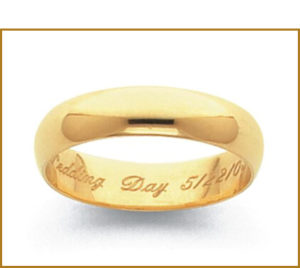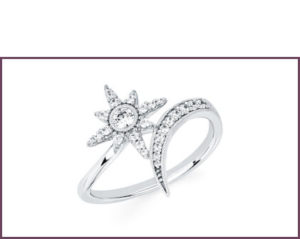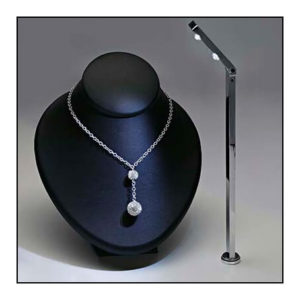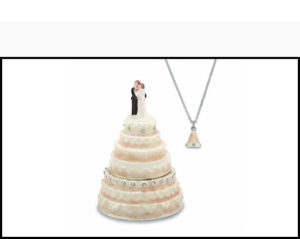Appealing To Key Gifters: Women
How can you make shopping for jewelry appeal to a woman’s desire to experience your store through relational merchandising and the joy of the hunt?
Research by MVI Marketing finds that more than half (51 percent) of female consumers buy jewelry for themselves, 14 percent buy for their partner/spouse, and 17 percent make purchases together with their partner/spouse. That equates to women buying and influencing 81 percent of all jewelry sales.
Jewelers traditionally have sold to men, considering women a secondary influencer, says Stephanie Holland, author and founder of She-conomy, in a recent Plumb Club webinar on female self-purchasers. But with less than half of U.S. adults married today, compared to nearly 80 percent in the 1950s, the landscape of the jewelry market has changed significantly.
 “Because the customer paradigm has shifted from men to women, it’s imperative for jewelry manufacturers and retailers to understand the female market,” says Holland. “Most jewelry manufacturers and retailers are male-owned and operated. This is further exacerbated by the fact that advertising is also male dominated.” Her research shows that 91 percent of women say most advertisers don’t connect with them.
“Because the customer paradigm has shifted from men to women, it’s imperative for jewelry manufacturers and retailers to understand the female market,” says Holland. “Most jewelry manufacturers and retailers are male-owned and operated. This is further exacerbated by the fact that advertising is also male dominated.” Her research shows that 91 percent of women say most advertisers don’t connect with them.
Connecting the Dots
The fine jewelry industry must “unlearn” a few things to capture their most important demographic, says marketing consultant Andrea Hill of the Hill Management Group in the recent Plumb Club webinar with Holland. “Jewelry stores are designed almost completely around how men buy, and alienate women in the process.”
The differences between men and women are profound when it comes to marketing and selling. “Men are interested in visuals of an item, and anything performance or status-related about the item,” Hill explains. “But women are generally more interested in ideas and relationships associated with the item. Boys watch objects, girls watch faces.”
For most women, jewelry is about life, love, fashion, or personal accomplishment. It’s critical to show the female shopper how the jewelry fits with her life, says Hill. Focus on the context not the thing. It’s about the ideas around the thing and its relationship to other things. Women need objective and subjective information. They want emotional and social cues, in addition to design and functional details.
Moreover, women are organic shoppers, creative and indirect, says Hill. It’s not about service, as much as collaboration. “Think about how Sephora makes makeup fun. They show interest in your skin type, lifestyle, and makeup regimen. Many other stores sell all the same items, but Sephora does it better!”
Events are a great way to engage with customers get them into your stores, especially during the holidays, advocates Theresa Namie, merchandise manager for the Minneapolis, Minnesota manufacturer, Ostbye “Have a wish ‘list night’ for the ladies. Then hold a ‘reveal’ night for the men. Plan it around your clientele. Have items in boxes ready to go. Gift sets already boxed work great for helping customers to choose.”
Theresa Namie, merchandise manager for the Minneapolis, Minnesota manufacturer, Ostbye “Have a wish ‘list night’ for the ladies. Then hold a ‘reveal’ night for the men. Plan it around your clientele. Have items in boxes ready to go. Gift sets already boxed work great for helping customers to choose.”
Exploration & Engagement
Shopping for women is more about the hunt, says Hill. She cites retailers like the London toy-store Hamley’s and kitchen lifestyle brand Williams-Sonoma creating interest in, confidence about, and desire for their products with live demonstrations, and merchandising in vignettes that tell stories. Merchandise for experience, not categories.
So, Hill asks: How can you turn your jewelry store into an experience? What must you do to make it possible for customers to pick up jewelry, try it on, look in a mirror (without asking for one), and share on social media? How can you create integrations between smart phones and jewelry displays so customers can scan QR codes for more information? How can you make shopping for jewelry appeal to a woman’s desire to experience your store through relational merchandising and the joy of the hunt?
Boutique merchandising is the way to go, says Peterson, laid out by designer, gemstone, color, season, and occasion — anything that makes sense to customers and allows them to see what everything within view has in common. “That makes things easier for gift buyers once the sales professional can help them identify the characteristics most important to the recipient or gift message.”
Peterson discourages against choosing new product in an effort to attract new customers, unless there’s a compelling reason to do so. The general concept she suggests to clients is: “Would your top regular customers expect to find this in your store, and would they love it/buy it if they did’?
 Wrap It Up
Wrap It Up
Consumers want customized and meaningfully real experiences, champions Nathan Button, product manager for the display and packaging division at Rio Grande, a Richline company, in Albuquerque, New Mexico.
“Displays instantly present your products, setting forward that initial perception of your brand,” says Button. But he underscores that that perception needs to carry through as it leaves the store in the packaging. “Things like wrapping the box in a heavy coarse bow or including a handwritten note on the back of each brand tag. Wowing the recipient every time the jewelry box is opened!”
Peterson says the most successful jewelers do a good job at creating added value with their packaging. “Some of the best have figured out that adding a small collection of high-quality gift cards to their offering is a great way to enhance the buying experience.”
Metallic color options — big in fashions, interiors and electronics — are trending for displays and packaging, cites Karen Crowe, marketing/merchandising, Quality Gold, Fairfield, Ohio regarding its Gem Pak line. “With easy custom capabilities, stores are opting to add their logo and coordinate packaging, pouches and totes.”
Know Your Customers
The easiest gift sales are those made to existing customers, says Peterson, particularly when a store’s sales team is  great at information capture, retention and use. “Knowing your customers’ interests and style, needs (i.e. special dates, occasions), and story makes for comfortable and effective outreach.”
great at information capture, retention and use. “Knowing your customers’ interests and style, needs (i.e. special dates, occasions), and story makes for comfortable and effective outreach.”
Hill underscores the need for jewelers to drop the jewelry rules and stop judging the options. “Women have their own reasons for buying fine jewelry, and they’re far less likely than men to consider jewelry for its monetary value,” she said. “If a consumer is interested in a lab-grown diamond, show her a lab-grown diamond. Just make the proper disclosures and deliver a quality product that meets the customer’s expectations. Merchandise to your brand.”